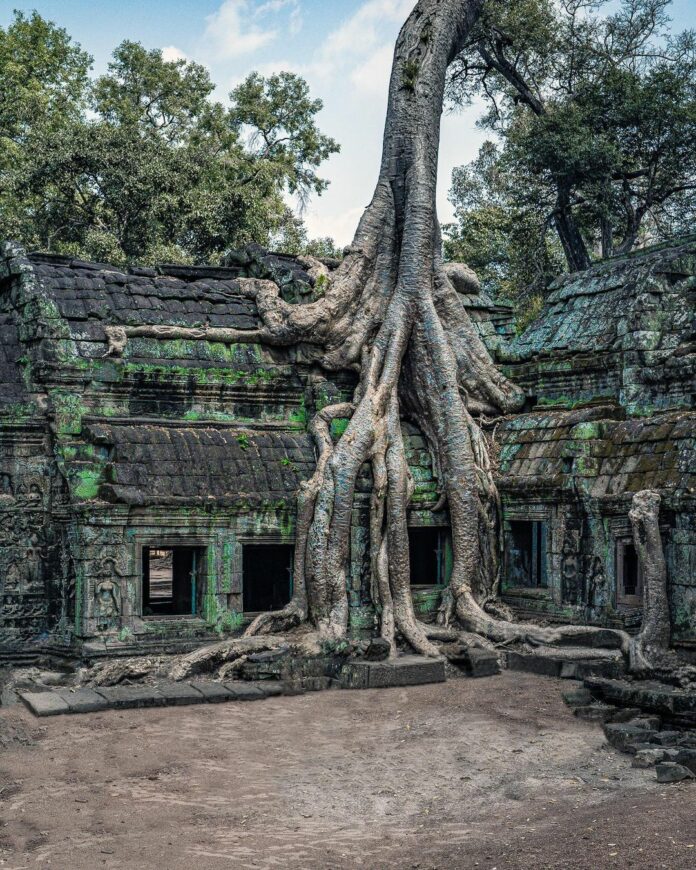Nestled in the lush landscapes of Cambodia, Ta Prohm stands as a timeless symbol of the grandeur and mystery of the Khmer Empire. Known for its breathtaking fusion of architecture and nature, Ta Prohm is a must-visit site near Siem Reap. This ancient temple, famously featured in the film Lara Croft: Tomb Raider (2001), captivates visitors with its unique charm and historical significance. As a part of the UNESCO World Heritage List since 1992, Ta Prohm offers a window into the past, showcasing the impressive achievements of the Khmer civilization.
History of Ta Prohm
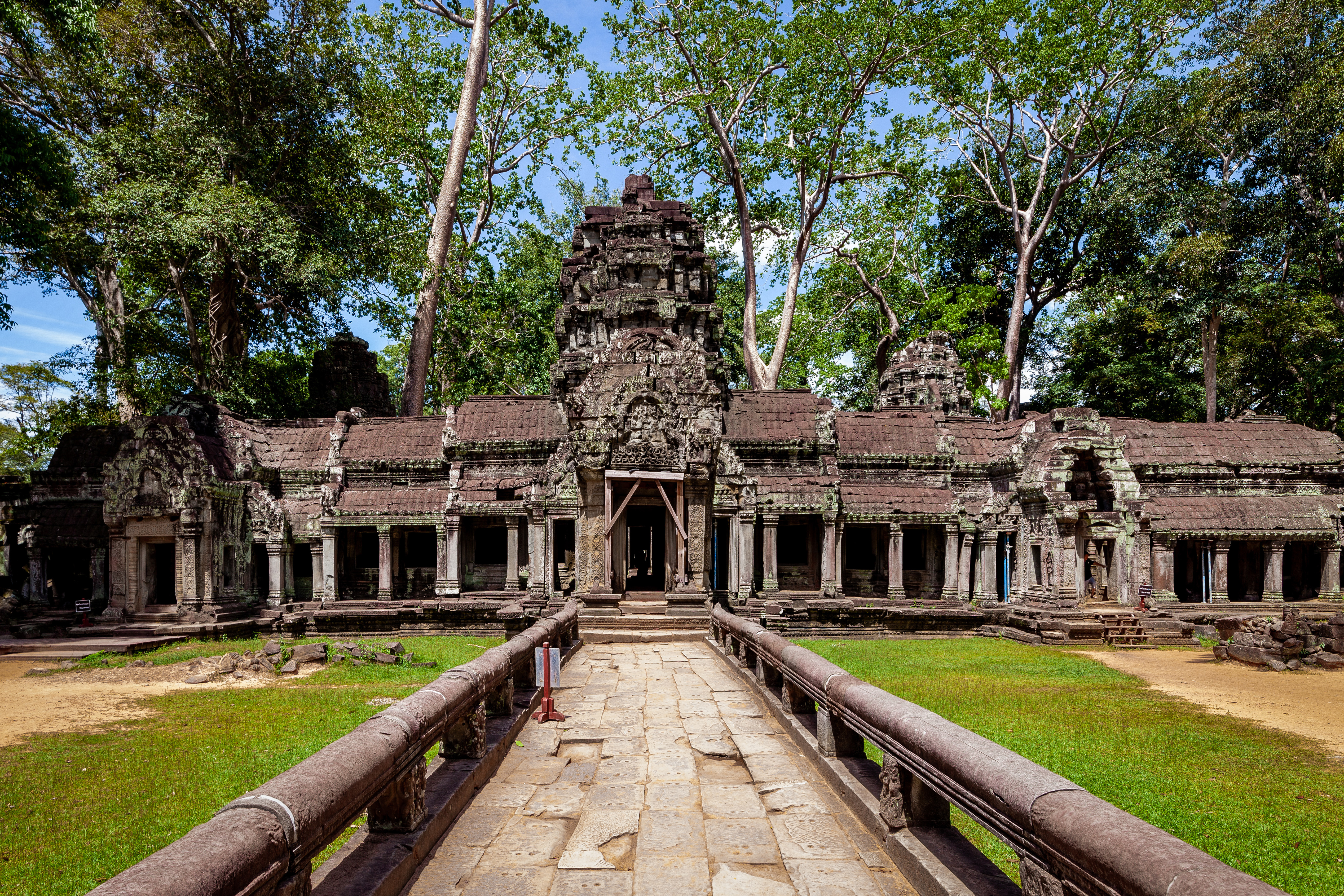
Constructed in the late 12th to early 13th centuries, Ta Prohm was originally named Rajavihara, meaning “Royal Monastery.” The temple was commissioned by King Jayavarman VII, who was renowned for his ambitious building projects and his dedication to Mahayana Buddhism. Ta Prohm was founded in honor of the king’s mother, with its central image representing Prajnaparamita, the embodiment of wisdom. This revered figure was modeled after the king’s mother, while the temple’s satellite structures honored the king’s guru and elder brother.

The temple’s stele records that it supported over 12,500 people, including high priests and dancers, and was surrounded by a vibrant community of 80,000 people. The temple accumulated vast wealth in the form of gold, pearls, and silks. Ta Prohm was designed to complement Preah Khan, another major temple built by Jayavarman VII in 1191, which was dedicated to the king’s father and featured a similar architectural style.
Abandonment and Restoration
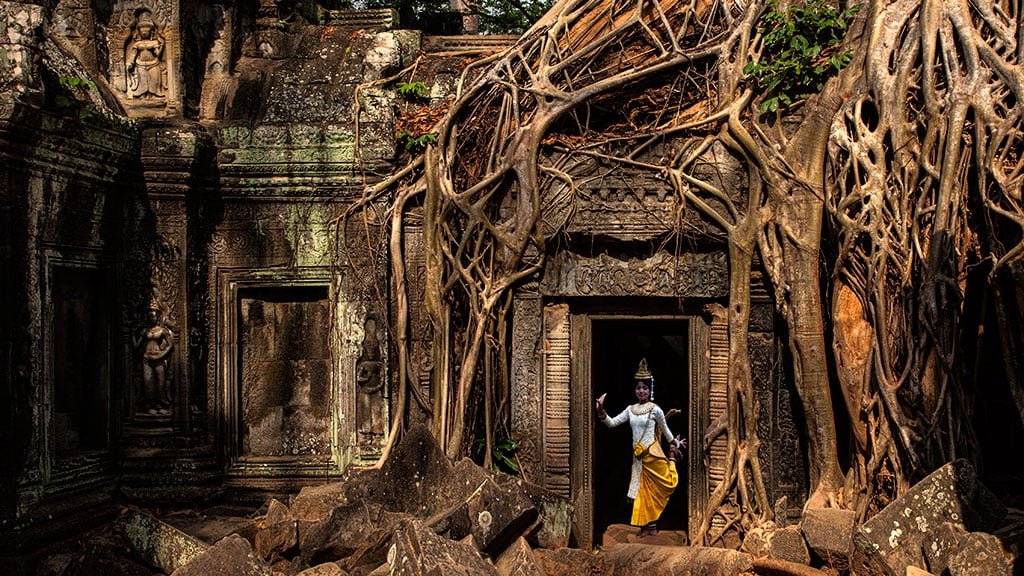
Following the fall of the Khmer Empire in the 15th century, Ta Prohm fell into disrepair and was overtaken by the encroaching jungle. When conservation efforts began in the early 20th century, the École française d’Extrême-Orient decided to preserve the temple in its state of picturesque neglect, showcasing its unique integration with the surrounding forest. This decision was influenced by Maurice Glaize, a prominent scholar of Angkor, who appreciated the temple’s imposing presence and its harmonious blend with nature.
In 1992, Ta Prohm was inscribed on the UNESCO World Heritage List. Restoration and conservation efforts have since been a collaborative endeavor between the Archaeological Survey of India and the APSARA Authority. By 2013, extensive restoration work had been completed, including the construction of wooden walkways and platforms to protect the site from tourist damage. Recent renovations, such as the restoration of the Hall of Dancers in 2022, have continued to preserve Ta Prohm’s historical and cultural significance.
Design and Layout

Ta Prohm is a prime example of a “flat” Khmer temple, distinguished from the pyramid or mountain-style temples by its layout. The temple is enclosed by five rectangular walls, surrounding a central sanctuary dedicated to Prajnaparamita. The temple is oriented eastward, with the main structure positioned to the west along an elongated east–west axis. The outer wall measures 1000 by 650 meters, covering an area of 650,000 square meters, once bustling with activity but now largely forested.
The temple complex features entrance gopuras at each cardinal point, though modern access is limited to the east and west. Notable additions from the 13th century include face towers similar to those at Bayon, although some have collapsed over time. The temple’s layout is characterized by its partially collapsed state and the presence of numerous other structures, including libraries, satellite temples, and the Hall of Dancers.
Representational Art
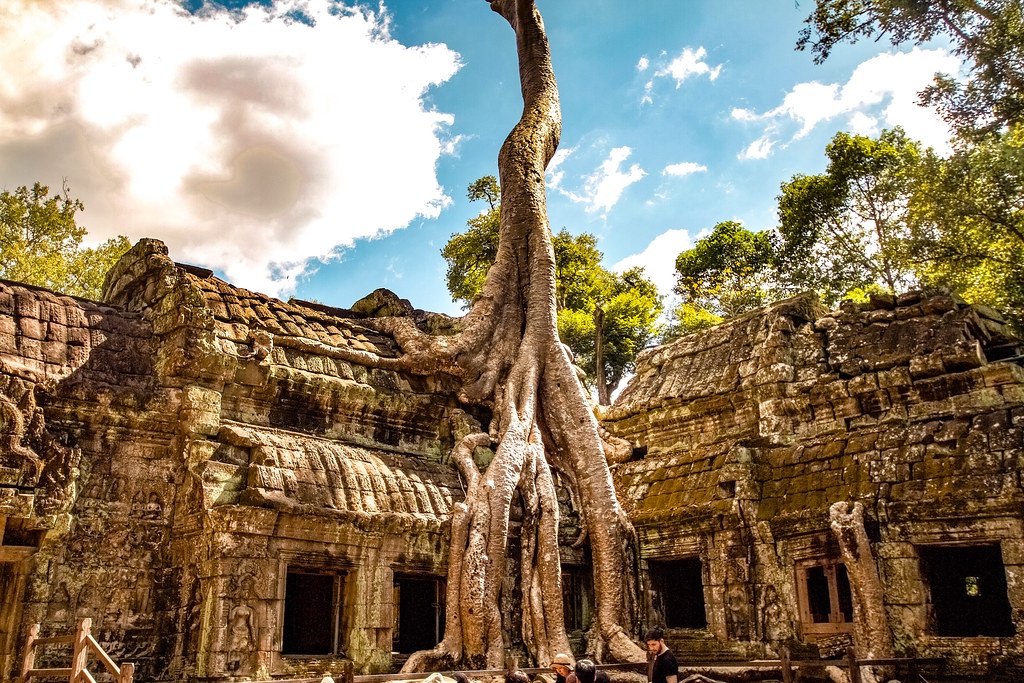
Ta Prohm is not as rich in narrative bas-reliefs as other Khmer temples like Angkor Wat or Angkor Thom. However, it does feature significant depictions, including scenes from Buddhist mythology and images of devatas (minor female deities), meditating monks, and temple guardians. One notable bas-relief illustrates the “Great Departure” of Siddhartha, the future Buddha, from his father’s palace.
Trees and Nature
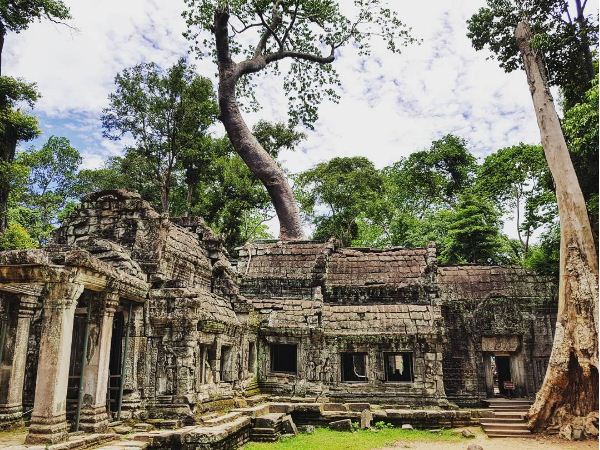
The most distinctive feature of Ta Prohm is its integration with the natural environment. The temple’s ruins are intertwined with massive trees, which have become a defining aspect of its appeal. The larger trees are either silk-cotton trees (Ceiba pentandra) or Tetrameles nudiflora, while the smaller ones may be strangler figs (Ficus gibbosa) or gold apples (Diospyros decandra). These trees, with their sprawling roots and towering trunks, contribute to the temple’s enchanting and otherworldly atmosphere.
Conclusion
Ta Prohm remains a captivating testament to the ingenuity and spiritual devotion of the Khmer Empire. Its unique blend of ancient architecture and natural beauty has made it a cherished site for both historians and travelers alike. As conservation efforts continue to preserve this magnificent temple, Ta Prohm stands as a vivid reminder of a bygone era, inviting visitors to explore and appreciate its historical and cultural significance.
